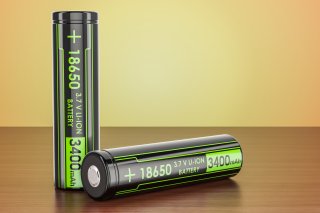How to Safely Dispose of E-Cigarettes: Information for Schools and Small Businesses
On this page:
- E-cigarettes go by many names and have many designs
- E-cigarettes contain lithium batteries and nicotine
- Schools and Businesses can safely dispose of e-cigarettes and components
E-cigarettes go by many names and have many designs
E-cigarettes are sometimes called e-cigs, vapes, vape pens, e-hookahs, and electronic nicotine delivery systems or ENDS. Some e-cigarettes look like regular cigarettes, cigars, or pipes. Some look like USB flash drives, pens, and other everyday items.
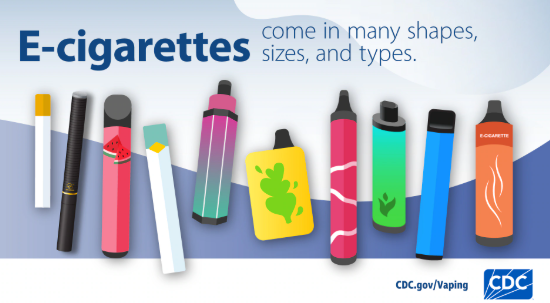
E-cigarettes contain lithium batteries and nicotine

One thing that these e-cigarettes have in common is that they contain nicotine and lithium batteries, making them hazardous waste under the Resource Conservation and Recovery Act.
Nicotine is acutely toxic. Liquid nicotine in e-cigarettes can be easily absorbed by the skin, potentially causing nicotine poisoning with symptoms that include difficulty breathing, fainting, or seizures. Nicotine can also harm fish and other aquatic organisms. Nicotine e-liquid is an acute hazardous waste with the RCRA hazardous waste code P075 (nicotine, & salts).
Lithium batteries can catch fire, especially when damaged. When placed in trash and recycling bins, lithium batteries often get damaged by trash compactors and can cause fires during transportation and at waste and recycling facilities. Most lithium batteries, when discarded, would likely be considered ignitable and reactive hazardous waste (RCRA hazardous waste codes D001 and D003, respectively).
Schools and Businesses can safely dispose of e-cigarettes and components
Do not:
- Put nicotine e-liquids down the drain.
- Rinse or wash e-liquids out of e-cigarettes.
- Put e-cigarettes or e-cigarette components in the trash or recycling bins.
- Bring the e-cigarettes to Drug Enforcement Administration Take-Back Days, which are for individual consumers, not schools or businesses.
Do follow these three steps:
Step 1: Safely store collected e-cigarettes before disposal.
| Intact e-cigarettes | E-cigarette components | |
|---|---|---|
| Lithium batteries | Nicotine e-liquids (vials or loose cartridges/pods) | |
Place each individual e-cigarette in a separate clear, sealed plastic bag to prevent the batteries from short-circuiting and catching fire. 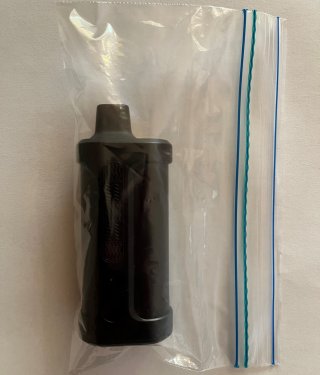
| Place each individual lithium battery in a separate clear, sealed plastic bag to prevent the batteries from short-circuiting and catching fire. 
| Place nicotine e-liquid vials, cartridges, and pods in a clear, sealed plastic bag. You can combine multiple items in the same bag. 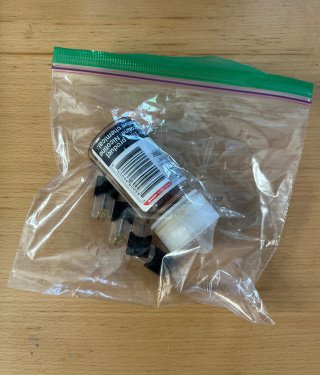
|
Alternative: Tape the battery terminals to prevent the batteries from short-circuiting and catching fire. 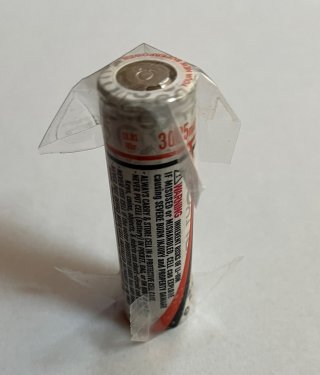
| Caution: If possible, wear chemical resistant gloves (e.g., latex or nitrile) to protect your skin from nicotine poisoning. 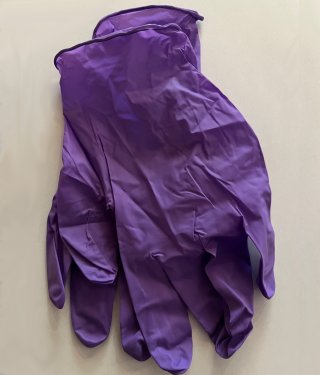
| |
Step 2: Determine your RCRA hazardous waste generator category.
The options that your school or business has for disposing of your hazardous waste depend on how much hazardous waste your school or business generates per calendar month.
EPA established three RCRA hazardous waste generator categories - very small, small, and large quantity generators. Below are details about these categories and the amount of hazardous waste that schools or businesses would generate per month to land in each category.
VSQG Very small quantity generator | SQG Small quantity generator | LQG Large quantity generator | |
|---|---|---|---|
| Non-acute hazardous waste generated per calendar month | ≤ 100 kilograms (220 pounds) | > 100 & < 1000 kilograms | ≥ 1000 kilograms (2,200 pounds) |
| Acute hazardous waste generated per calendar month | ≤ 1 kilogram (2.2 pounds) | > 1kilogram (2.2 pounds) | |
You must count ALL the hazardous waste that your school or business generates on site in a calendar month – not just the e-cigarettes and e-liquids – in determining your RCRA generator category. A few examples can include:
- Lithium batteries from electronic devices.
- Laboratory chemicals.
- Expired hand sanitizer.
- Cleaning supplies.
- Pesticides.
- Vocational shop chemicals.
Help with counting hazardous waste from e-cigarettes:
Importantly, even if your school or business generates less than one kilogram (2.2 pounds) of acute hazardous waste each calendar month, your school or business could become an LQG if you accumulate more than one kilogram (2.2 pounds) of acute hazardous waste on site. We recommend that your school or business send the collected e-cigarettes off site on a regular basis to avoid accumulating one kilogram (2.2 pounds) of acute hazardous waste and becoming an LQG.
Step 3: Determine your disposal options.
Your disposal options will depend on:
- The RCRA generator category of your school or business, and
- Whether your school or business is a healthcare facility (e.g., retail pharmacy or vape shop) or has an on-site healthcare facility (e.g., nurse’s office or clinic).
If the school or business is a VSQG:
| Disposal Options | What to Do and Know |
|---|---|
| 1. Small Business Collection Program |
|
2. Off-site Consolidation if the school or business:
|
|
3. Off-site Consolidation if the school or business:
|
|
If the school or business is not a VSQG:
| Disposal Options | What to Do and Know |
|---|---|
1. If the school or business:
|
|
2. If the school or business:
|
|

